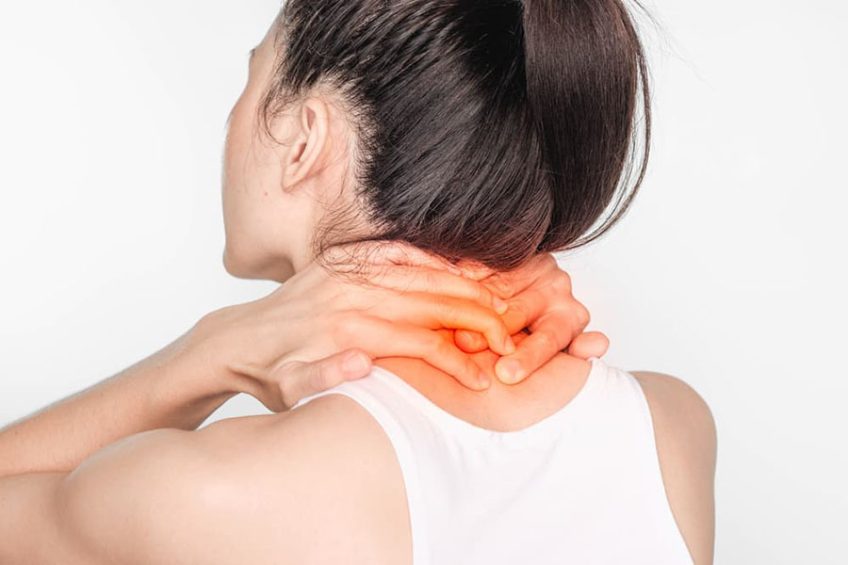Spondylosis is also known as spinal osteoarthritis – a fairly common condition, but it is usually not serious, although it can be quite painful. As with many other terms for describing spinal problems, spondylosis is more of a descriptive term than a clinical diagnosis. Literally, it can be translated to mean both pain and degeneration of the spine, regardless of what causes the pain or where the degeneration occurs.
Spondylosis is becoming more common. Over 80% of people over the age of 40 have spondylosis in radiographic studies.
CONTENT:
Causes of Spondylosis
The bones and cartilage in the cervical spine are more prone to damage due to various causes. These include:
- Bone spurs – are some bone growths that occur when the body develops excess bones to make the spine stronger.
However, these bones can put pressure on delicate areas of the spine, such as the spinal cord and nerves, which is why the pain occurs.
- Dehydrated spinal discs – the bones of the spine have discs between them, which are similar to thick pillows, which absorb the shock of lifting, twisting and other activities. The gel material in these discs can dry over time. This causes the bones (vertebrae of the spine) to rub more, which can be painful.
This process can begin at the age of 30.
- Disc herniation – the vertebral discs may develop cracks, allowing internal cushioning material to drain. It can press on the spinal cord and nerves, leading to symptoms such as numbness of the arm and pain radiating down one of the arms.
- Injury – a trauma to the neck (due to a fall or a car accident, for example) can speed up the aging process.
- Ligament stiffness – the hard cords that connect the bones of the spine can become even harder over time, which affects the movement of the neck.
- Overload – some activities or hobbies involve repetitive movements or difficult efforts that can put pressure on the spine, resulting in its early wear.
Symptoms of Spondylosis
These symptoms can range from mild to severe, and can become chronic. These may include:
Neck (cervical area)
- The pain that appears and disappears
- Pain that spreads to the shoulders, arms, hands or fingers
- Stiffness in the morning in the neck or shoulder, or a limited range of motion
- Numbness of the neck or shoulder
- Weakness or tingling in the neck, shoulders, arms, hands or fingers
- Headache felt in the nape of the neck
- Loss of balance
- Difficulty swallowing (This is rare, but may occur if the spinal cord is compressed.)
Chest area
- Bending and enlarging the body triggers pain
- Stiffness in the back when getting out of bed in the morning
Lower back
- Pain that appears and disappears
- Stiffness in the back in the morning
- Pain that decreases after rest or exercise
- Weakness or numbness in the lower back
- Sciatica (mild to severe pain in the foot)
- Weakness, numbness or tingling in the back, legs or soles
- Difficulty walking
- Intestinal or bladder disorders (this is rare, but may occur)
Treatment of Spondylosis
Often, methods that do not involve surgery are very effective.
A physiotherapist is usually helpful for people with cervical spondylosis. Physical therapy helps to stretch the muscles of the neck and shoulders, which, in the end, will lead to pain relief.
Therapeutic massage is often indicated before physiotherapy sessions, to calm and relax the area, combat painful muscle contractions, stimulate blood circulation and muscle toning.
Your doctor may recommend medications such as anti-inflammatory drugs, narcotics, antiepileptics, steroid injections or topically applied gels.
If the patient’s condition is severe and he does not respond to other forms of treatment, surgery may be needed. This may involve removing the bone spurs, parts of the neck bones or herniated discs to give more space to the spinal cord and nerves.
Surgery is rarely necessary for cervical spondylosis. However, the doctor recommends this method if the pain is severe and if the patient’s ability to move his arms is affected.
Natural remedies
There are several natural remedies that may help those suffering from cervical spondylosis. These include:
- Ginger tea;
- Devil’s claw supplements;
- White willow bark extract supplements.
Although they can help reduce pain and inflammation, they should be taken with your doctor’s consent. Even if it is an herbal tea, it can have unwanted effects if it interacts with another commonly used medicine prescribed by your doctor.


